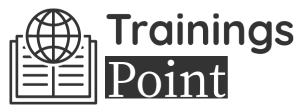Bad attitudes, jealousy, and disruptive behavior will sabotage your organization's morale, lower self-esteem, and reduce teamwork and productivity. When toxic behavior infects a department, managers may be tempted to ignore it or give in, the wrong thing to do, but tolerating it is not a solution! This session will show you how to neutralize gossip and put a system in place to ensure it does not re-occur, starting with that of Zero Tolerance and workplace reprimands. The destructive effects of blaming others, griping, pessimism, and always passing the buck need to be stopped. In this session, you will learn to keep emotional control and tame disruptive and destructive behavior.
WHY SHOULD YOU ATTEND?
What happened to respect? Rude, indifferent, emotionally troubled, overworked, and disengaged employees do more harm your business and employee productivity than you can afford. A workplace culture of tolerating a bad attitude by one or more employees is unacceptable. A lot of times, the cause of the employee attitude is generated from how they are treated at work, a seeming lack of respect for them. Is it you or is it them that is the problem? When you fully exercise your position power, you will dramatically improve the strained relationship and drive up their power.
Respect comes from knowing the person and this session is about how to find out what matters, drives, and engages them. When you have a language of caring, you create respect. This session is about how to change this person's viewing and behavior to move them to be solution orientated. Respect drives up trust, engagement, and creativity. When you move from cautious and superficial small talk to dealing with the issue in a language of caring and a blameless apology, you go from a response of: “I thought you would never ask” to “Thank you, let’s clear this up.”
AREA COVERED
- How do managers inadvertently reward harmful and destructive behaviors?
- The steps you need to act on to keep total control of the situation
- The four types of problem employees there can be and how they become a problem
- How to turn around the gossip, gab, and grapevine to create more empowered employees?
- How to tell when someone is lying to you and how to confront them on it?
- When to focus on the behavior you see and not the attitude behind it?
- How do you identify all the forms of bullying that you need to control?
- Learn which topics should not be talked about at work
- How to stop the rumor mill before it gets started with a policy of transparency?
- Why do people want to ‘push your buttons’ with their off-side or inappropriate comments?
- The D.I.S.C. personality profile – teaches how people do what they do good or bad
- How to control the office's unwritten rules that become a negative culture to discipline?
- How to adopt great techniques to use when employees blame others or deny responsibility?
LEARNING OBJECTIVES
One of the worse things that a workplace can have is a negative environment. The webinar focuses on how to handle negativity among employees and exercise your power to promote trust, engagement, and creativity and improve the overall working environment.
WHO WILL BENEFIT?
This webinar is perfect for anyone with a disruptive company culture of harassment, gossip, bullying, or toxic behavior.
Bonus: Complimentary Resources
- Several will be offered at the conclusion of the session from
- e-books to articles on conflict resolution and engagement.
What happened to respect? Rude, indifferent, emotionally troubled, overworked, and disengaged employees do more harm your business and employee productivity than you can afford. A workplace culture of tolerating a bad attitude by one or more employees is unacceptable. A lot of times, the cause of the employee attitude is generated from how they are treated at work, a seeming lack of respect for them. Is it you or is it them that is the problem? When you fully exercise your position power, you will dramatically improve the strained relationship and drive up their power.
Respect comes from knowing the person and this session is about how to find out what matters, drives, and engages them. When you have a language of caring, you create respect. This session is about how to change this person's viewing and behavior to move them to be solution orientated. Respect drives up trust, engagement, and creativity. When you move from cautious and superficial small talk to dealing with the issue in a language of caring and a blameless apology, you go from a response of: “I thought you would never ask” to “Thank you, let’s clear this up.”
- How do managers inadvertently reward harmful and destructive behaviors?
- The steps you need to act on to keep total control of the situation
- The four types of problem employees there can be and how they become a problem
- How to turn around the gossip, gab, and grapevine to create more empowered employees?
- How to tell when someone is lying to you and how to confront them on it?
- When to focus on the behavior you see and not the attitude behind it?
- How do you identify all the forms of bullying that you need to control?
- Learn which topics should not be talked about at work
- How to stop the rumor mill before it gets started with a policy of transparency?
- Why do people want to ‘push your buttons’ with their off-side or inappropriate comments?
- The D.I.S.C. personality profile – teaches how people do what they do good or bad
- How to control the office's unwritten rules that become a negative culture to discipline?
- How to adopt great techniques to use when employees blame others or deny responsibility?
One of the worse things that a workplace can have is a negative environment. The webinar focuses on how to handle negativity among employees and exercise your power to promote trust, engagement, and creativity and improve the overall working environment.
This webinar is perfect for anyone with a disruptive company culture of harassment, gossip, bullying, or toxic behavior.
Bonus: Complimentary Resources
- Several will be offered at the conclusion of the session from
- e-books to articles on conflict resolution and engagement.
Speaker Profile
 Bruce Lee
Bruce Lee
Bruce Lee has been educating and inspiring audiences with practical and proven information they can immediately implement into their personal and professional lives and for improved business growth or efficiency. A varied business and leadership background provides him with proven experience that clients can relate to. A solid business background from a good cross-section of the industry includes: Charter Bank branch management, with special projects assigned from time to time of mortgage lending departments and seasonal savings bond drives,Manager / Resident Representative for the VISA credit card Division of a legacy Bank, in charge of the entire Province of Alberta Senior marketing …
Upcoming Webinars

2025 EEOC & Employers: Investigating Claims of Harassment …

Drive Recruiting Success with the Using Recruiting Metrics …

Introduction to Microsoft Power BI Dashboards

Effective Onboarding: How to Welcome, Engage, and Retain Ne…

Designing Employee Experiences to Build a Culture of Compli…

Impact Assessments For Supplier Change Notices

What is in Store for Employers When Updating Employee Handb…

Mastering Job Descriptions: Legal and Practical Insights fo…

Onboarding Best Practices for 2025: Proven Strategies to Po…

Accounting For Non Accountants : Debit, Credits And Financi…

FDA Compliance And Laboratory Computer System Validation

The Anti-Kickback Statute: Enforcement and Recent Updates

Creating a Successful Job Rotation Program

Aligning Your HR Strategy with Your Business Strategy

How To Create Psychological Safety in your Organization

Transforming Anger And Conflict Into Collaborative Problem …


How to Give Corrective Feedback: The CARE Model - Eliminati…

Identifying, Managing, and Retaining High Potential Employe…

AI at Your Service: Enhancing Your Microsoft OfficeSkills w…

Zero Acceptance Sampling to Reduce Inspection Costs

I-9 Audits: Strengthening Your Immigration Compliance Strat…

Why EBITDA Doesn't Spell Cash Flow and What Does

Female to Female Hostility @Workplace: All you Need to Know


Developing and Implementing Quality Culture in the Organiza…

Project Management for Non-Project Managers - How to commun…

Human Factors Usability Studies Following ISO 62366 and FDA…

Dealing With Difficult People In Life & Work

FDA Recommendations for Artificial Intelligence/Machine Lea…

How to Document Employee Discussions and Why it is Important

Enhancing Pivot Tables with Images: Visualize Your Data Lik…

How to Write Effective Audit Observations: The Principles f…

2-Hour Virtual Seminar on the 6 Most Common Problems in FDA…

Sunshine Act Reporting - Clarification for Clinical Research


Project Management for administrative professionals

How to Write Contracts for Procurement Professionals

Transform Data into Insights: A Beginners Guide to Excel Pi…

Uplifting the Credibility of HR: How to Build the Credibili…

Strategic Interviewing & Selection: Getting the Right Talen…

Onboarding Best Practices for Millennial and All Employees


Performance of Root Cause Analysis, CAPA, and Effectiveness…


2-Hour Virtual Seminar on How to Conduct an Internal Harass…

FDA Audit Best Practices - Do's and Don'ts

Emotional Intelligence: Mastering the Emotions of Great Lea…

Successful Strategies for FDA Expedited Pathways for Your D…

Unlock Employee Loyalty: Stay Interviews Will Keep Them Eng…
